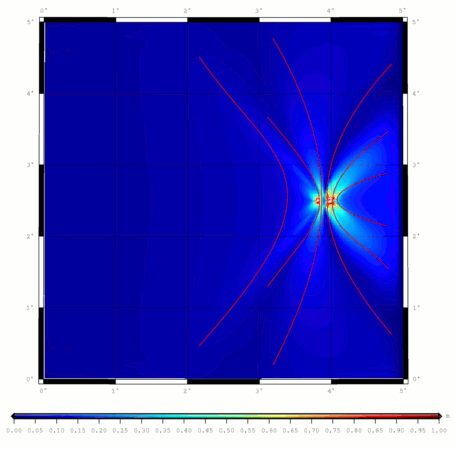HOME
| RESEARCH
| PUBLICATIONS
|
ABOUT ME |
CONTACT | WHAT'S NEW? | CASSANDRA! |
فارسی | CHANNEL | OUTREACH | TEACHING | CV
Tsunami Propagation Models:
A. Hydrodynamic Vs. Raypath Simulation:
Propagation patterns for tsunamis are complicated functions of source geometry and bathymetry. I am working on different path parameters that could affect propagation which is a fundamental issue in creating a solid dataset for tsunami warning.
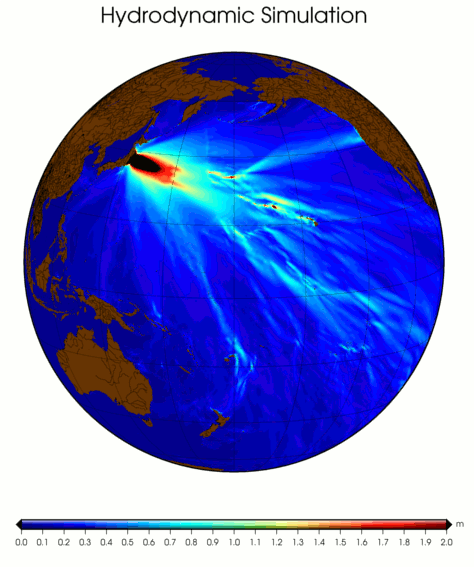
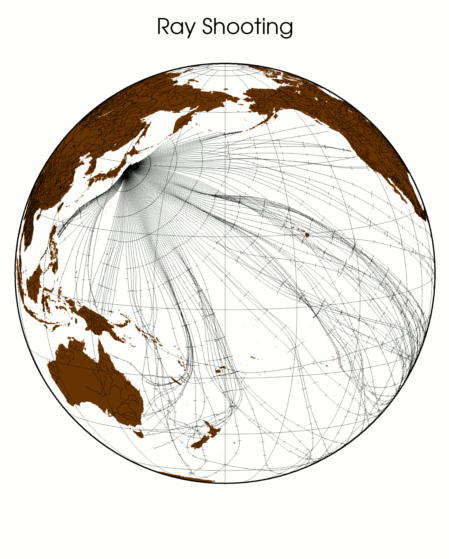
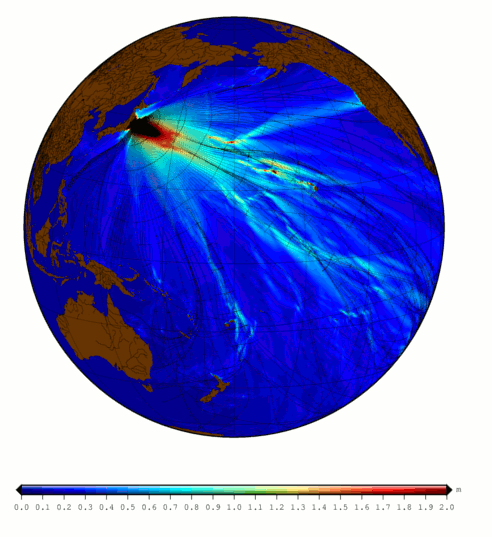
In these figures, I have tried to compare a generic hydrodynamic simulation and a generic raypath model of the tsunami of the 2011 Mw=9.0 event in the Pacific Ocean. The two models are superimposed in the figure on the right. Although the nature of "source" is totally different in the two representations, it is observed that the two models are in good agreement in representing the "propagation".
B. Slump Dipole:
As the propagation of tsunamis caused by dipole approximations of slumps can be represented by interference of hyperbolae, it is of interest to see observe the propagation and superposition of these geometrical figures in different velocity regimes. Here are some propagation movies for different generic cases. In each scenario, the left- and right-hand figures are cross-section and map views of the synthetic bathymetry profile used in the simulation.
1. Basin:
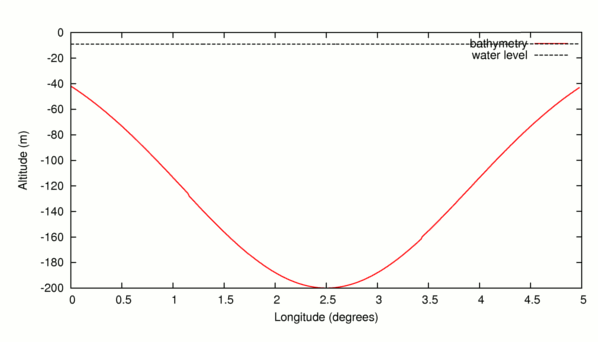

2. Slope:
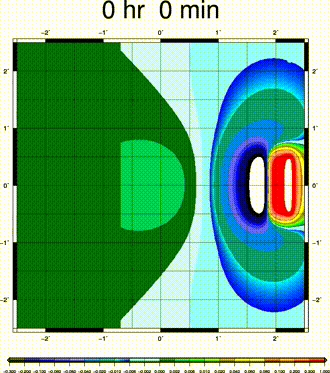

3. Rough Slope:
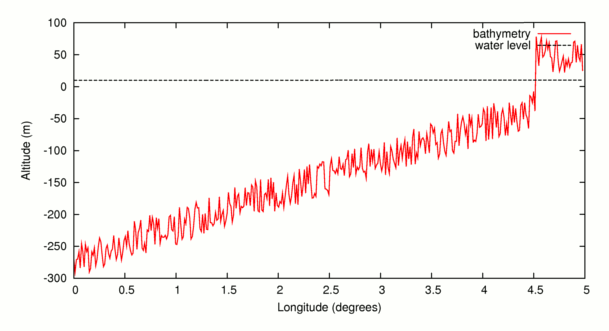
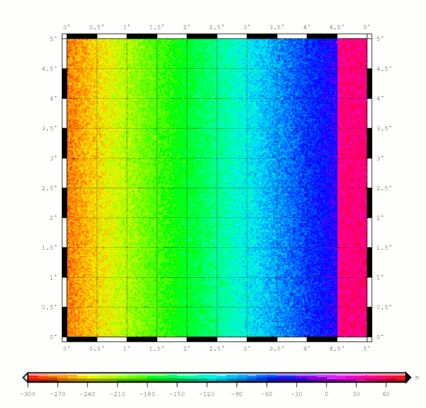
4. Slump Dipole -- Geometric Representation of Amplitudes/Run-Ups:
A "dipole slump" on slope (the two figures on the left) will create a maximum amplitude distribution as in the figure below the two. The red hyperbolas approximate the points with equal maximum amplitudes (iso-max). The green lines on the bottom-right figure are seven arrays of virtual gauges (400 gauges in each line). The videos show how the time-series of amplitudes change as one moves from the gauges at the top to the one at the bottom.

